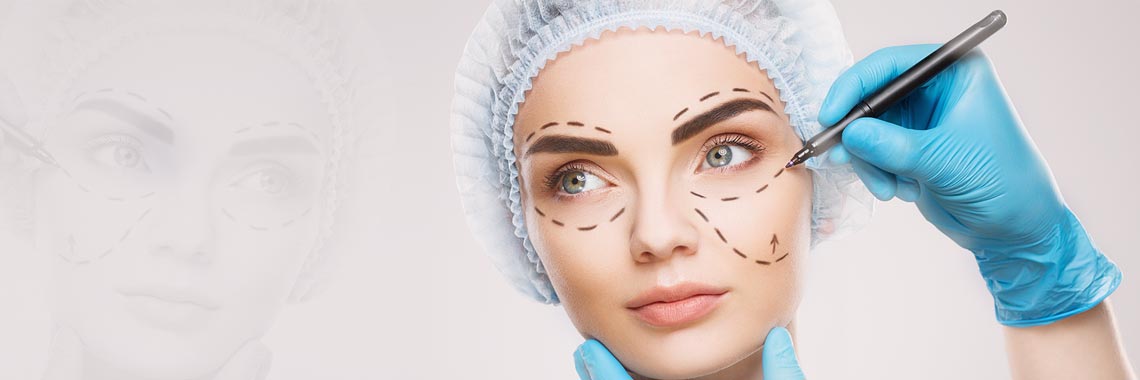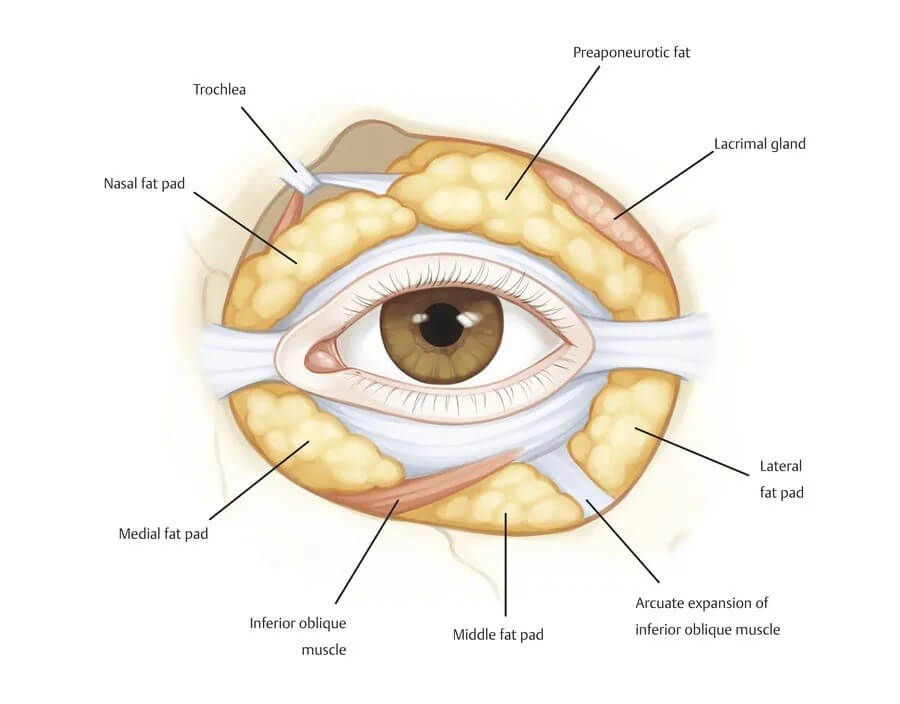
- Aesthetic Surgery
- Facial Surgery
- Eyelid Surgery
Eyelid Surgery
Surgery can be performed on the upper lids, lower lids or both.
Whether you want to improve your appearance or are experiencing functional problems with your eyelids, eyelid surgery can rejuvenate the area surrounding your eyes.
Loose or sagging skin that creates folds or disturbs the natural contour of the upper eyelid, sometimes impairing vision
Fatty deposits that appear as puffiness in the eyelids
Bags under the eyes
Drooping lower eyelids that reveal white below the iris
Excess skin and fine wrinkles of the lower eyelid

Type of procedure:
- simple pinch Blepharoplasty
- extended Blepharoplasty with fat transposition
- extended Blepharoplasty with med face lift
- Blepharoplasty from conjunctiva

Information about the Procedure:
The incision lines for eyelid surgery are designed so the resultant scars will be well concealed within the natural structures of the eyelid region.
The upper eyelid can be corrected through an incision within the natural crease on the eyelid. This allows for removal or repositioning of fat deposits, tightening of muscles and removal of excess skin.
Conditions of the lower eyelid may be corrected with an incision just below the lower lash line. Through this incision, excess skin in the lower eyelid is removed. Again, the excess fat can be repositioned or removed.
A transconjunctival incision, created on the inside of the lower eyelid, is an alternate technique to correct lower eyelid conditions and redistribute or remove excess fat. With this technique, no skin is removed.
 blepharo from conjunctiva
blepharo from conjunctiva
After the procedure:
After surgery you might temporarily have:
- Blurred vision from the lubricating ointment applied to your eyes
- Watering eyes
- Light sensitivity
- Double vision
- Puffy, numb eyelids
- Swelling and bruising similar to having black eyes
- Pain or discomfort
Take the following steps to help you recover from surgery :
- Use ice packs on your eyes for 10 minutes every hour the night after surgery. The following day, use ice packs on your eyes 4 to 5 times throughout the day.Use prescribed eye drops or ointments.
- Sleep with your head raised higher than your chest for a few days.
- Apply cool compresses to reduce swelling. Wear dark sunglasses to protect the skin of your eyelids from sun and wind.
Don't:
Do anything strenuous for a week — no heavy lifting, swimming, jogging or aerobics. Rub your eyes. Wear contact lenses for about two weeks.
A-Frame Deformity
Complication:
- Bleeding from the incision lines
- Changes in skin sensation or numbness of the eyelashes
- Difficulty closing your eyes
- Dryness to the eyes
- Infection
- Lid lag, a pulling down of the lower eyelid, may occur and is often temporary
- Pain
- Possible need for revision surgery
- Sensitivity to sun or other bright light
- Swelling and bruising
- Unfavorable scarring

The transfer of nasal and central fat into the tear trough deformity
Results:
The results of eyelid surgery will be long-lasting. While there usually is little pain involved in this surgery, there can be swelling or bruising. Most patients are presentable to the public in 10-14 days. However, it may take a few months before final healing is completed.
While eyelid surgery can be expected to correct certain conditions permanently, you will continue to age naturally. Ongoing sun protection will help to maintain your results.
Although good results are expected from your procedure, there is no guarantee. In some situations, it may not be possible to achieve optimal results with a single surgical procedure and another surgery may be necessary.
Medial epicantho-plasty
